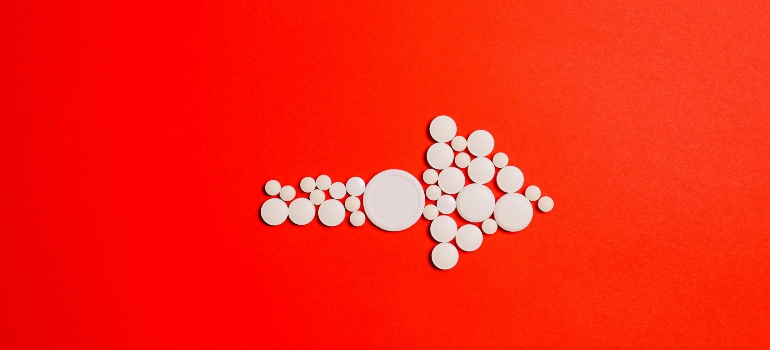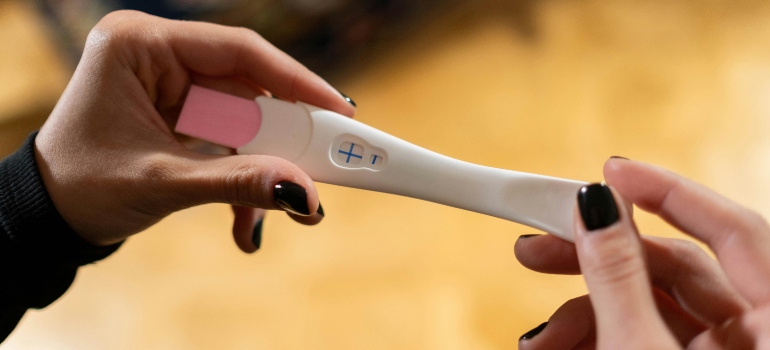If you’ve ever wondered about treatments for opioid addiction, you might have come across a medication called Suboxone. But what is Suboxone, and how does it help individuals battling addiction? In this simple guide, we’ll look into the basics of the drug, stripping away the medical jargon to give you a clear understanding. Imagine Suboxone as a helper that holds the hand of someone trying to walk away from opioid addiction, guiding them towards a path of recovery. Stick around as we explore how Suboxone works, its components, and why it’s a beacon of hope for many.
What is Suboxone?
Suboxone is a prescription medication commonly used to treat opioid addiction. Imagine it as a tool that helps people reduce their cravings for opioids, such as heroin or prescription painkillers, and manage withdrawal symptoms, making the path to recovery smoother.

So, what exactly is in Suboxone? It contains two main ingredients: buprenorphine and naloxone. Let’s break these down:
- Buprenorphine: This is the primary component of Suboxone. It’s a type of medication known as a partial opioid agonist. This might sound complex, but it essentially means that buprenorphine can attach to the same brain receptors as other opioids do but activates them less intensely. It’s like having a weak key that can turn on the engine but doesn’t let the car speed up too much. This helps reduce cravings and withdrawal symptoms without giving the same “high” that other opioids do.
- Naloxone: This ingredient is added to help prevent misuse of the medication. Naloxone is an opioid antagonist, which means it blocks the effects of opioids at the receptor level in the brain. If Suboxone is taken as prescribed, naloxone stays pretty much inactive and doesn’t affect the action of buprenorphine much. However, if someone tries to misuse Suboxone by injecting it to get high, the naloxone kicks in and blocks the effects of buprenorphine, preventing any sort of opioid high and potentially causing withdrawal symptoms.
Suboxone usually comes in the form of a film or strip that dissolves under the tongue or a tablet. It’s important that it’s used under the guidance of a healthcare provider, as part of a comprehensive substance abuse treatment WV offers that include counseling and psychological support. This approach helps address the broader spectrum of addiction, not just the physical aspects.
Uses of Suboxone
When doctors prescribe Suboxone, it’s usually for someone grappling with opioid dependence. This condition arises when a person finds it impossible to quit opioids because their body has adapted to the presence of the drug, making stopping abruptly a source of significant discomfort or even pain. Because it mitigates withdrawal symptoms and cravings, it provides substantial support during the initial stages of medical detox.
Additionally, Suboxone isn’t just for dealing with the body’s need for opioids. It’s a key part of a bigger plan to treat opioid addiction, which also looks at the mind and behaviors. Since addiction isn’t just about the body wanting the drug, it works best when it’s part of a plan that includes talking to therapists and getting counseling in drug rehab WV centers offer. This all-around approach helps fight addiction in more ways than one, making it more likely for someone to get better.

Although its primary application is in treating opioid addiction, Suboxone occasionally serves a secondary role in pain management, particularly for individuals with a history of opioid addiction who require pain relief. Given its lower potential for inducing a “high” or leading to further addiction compared to other painkillers, Suboxone represents a safer alternative for managing chronic pain in these cases. Nevertheless, employing Suboxone strictly for pain management is relatively rare.
How is Suboxone Administered?
People can take Suboxone in a few different ways, depending on what form it comes in and what their doctor thinks is best for them. The most common forms are sublingual tablets and film strips. “Sublingual” just means you put the tablet or film strip under your tongue and let it dissolve. This method gets the medicine into the bloodstream quickly. There’s also a film strip that can go inside the cheek, which works in a similar way. Recently, doctors have started using a Suboxone injection, which a healthcare provider gives once a month. This injection is another way to make sure a person gets their medication regularly without having to take it every day.
The Benefits of Suboxone Treatment
Suboxone treatment brings several key benefits for individuals working to overcome opioid addiction, including:
- Reduces cravings: It significantly lowers the desire for opioids, allowing individuals to concentrate on recovery without constant urges to use drugs.
- Eases withdrawal symptoms: Suboxone helps alleviate uncomfortable and sometimes painful withdrawal symptoms, making the initial phase of quitting opioids more manageable.
- Lower risk of abuse: Compared to other opioid treatments, Suboxone is less likely to be misused, making it a safer choice for long-term recovery efforts.
- Flexible treatment options: With various forms available, such as tablets, film strips, and injections, individuals can choose the method that best suits their needs, improving adherence to the treatment plan.
- Improves quality of life: By stabilizing individuals and reducing the chaotic effects of addiction, Suboxone treatment allows them to regain control over their lives, fostering a sense of normalcy and well-being.
- Access to support services: Suboxone treatment is often integrated with counseling, therapy, and support groups, providing individuals with comprehensive care that addresses both the physical and emotional aspects of addiction recovery.
- Reduces the risk of relapse: Suboxone treatment helps individuals stay on track with their recovery journey by minimizing the likelihood of relapse, even for individuals who suffer from chronic relapse disorder.
Is Suboxone Addictive?
Some people might think that because Suboxone is used to treat addiction, it must be addictive itself. However, when used as prescribed under medical supervision, it is not addictive in the same way that opioids are. It’s important to understand the difference between physical dependence and addiction.

Physical dependence happens when the body gets used to having a certain medication, and stopping it suddenly can cause withdrawal symptoms. This can happen with Suboxone, just like with many other medications. But addiction involves more than just physical dependence—it’s when someone compulsively seeks and uses a substance despite harmful consequences.
When used as part of a comprehensive treatment plan that includes therapy and counseling, such as during heroin rehab, Suboxone can be a valuable tool in overcoming addiction. It’s essential to take it exactly as prescribed by a healthcare provider to minimize the risk of dependence and misuse.
Side Effects of Suboxone
While Suboxone can help treat opioid addiction, it also carries potential side effects and risks, like any medication. Some people may experience headaches, nausea, or sweating when they initially take the medication. These side effects typically resolve as the body adjusts to the medication. However, individuals should be cautious of more severe side effects, such as trouble breathing, dizziness, or fainting. If someone experiences these symptoms, they should promptly contact a healthcare provider. Additionally, Suboxone may interact with other medications, so it’s crucial to inform the doctor about all medications or supplements you’re taking. Finally, there’s a risk of dependence if you don’t take the drug as prescribed or abruptly stop taking it.
How Effective is Suboxone?
Suboxne’s effectiveness lies in its ability to reduce the cravings and withdrawal symptoms associated with opioid dependence, which are major hurdles in the path to recovery. Here’s a closer look at how it supports recovery:
- Reduction in illicit opioid use: Studies have shown that patients on Suboxone are significantly less likely to use illicit opioids. For example, a study published in the American Journal of Psychiatry found that Suboxone reduced opioid use in 49% of participants, compared to 19% in the placebo group.
- Improvement in treatment retention: Staying in treatment is crucial for long-term recovery. Research indicates that Suboxone increases the likelihood that patients will remain in treatment. According to a study in the New England Journal of Medicine, patients receiving Suboxone had higher treatment retention rates, with 53% of participants still in treatment after 24 weeks, compared to just 31% of those not receiving the medication.
- Supporting long-term recovery: Long-term recovery not only involves abstaining from opioid use but also improving quality of life. Suboxone therapy can improve social functioning and mental health. Patients report better family relationships, job performance, and a reduction in illegal activities.
- Safety and tolerance: While all medications have side effects, Suboxone is generally safe for long-term use. Its ceiling effect — a plateau in the effect of the medication, meaning higher doses do not increase euphoria — reduces the risk of misuse.
Considerations for Suboxone treatment
When starting Suboxone treatment, it’s important to keep a few things in mind. First, only a doctor can prescribe it, and they will need to know about all other medicines you’re taking. This is because Suboxone can interact with other drugs, leading to unwanted side effects. Also, before taking Suboxone for the first time, it’s best if your body is already showing signs of withdrawal from opioids. This helps reduce the risk of uncomfortable reactions.

People with certain health conditions, like liver problems, trouble breathing, or a history of head injuries should tell their doctor because Suboxone might not be the best choice for them. During treatment, it’s crucial to follow the doctor’s instructions closely, taking the medication exactly as prescribed to avoid any problems.
If you’re pregnant, it’s crucial to let your doctor know. While managing addiction during pregnancy is important, Suboxone can affect your baby, so your doctor will need to weigh the benefits and risks carefully. They might decide it’s still the best option, or they might look at other treatments. If you’re breastfeeding, it’s a similar situation. Suboxone does pass into breast milk, so you’ll need to discuss with your doctor whether it’s safe for your baby.
How is Suboxone Prescribed and Monitored?
To start Suboxone treatment, you first meet with a healthcare provider who specializes in addiction treatment, such as cocaine rehab. During this meeting, the provider checks your health, learns about your history of opioid use, and decides if Suboxone is a good choice for you. If it is, you might begin treatment right away, sometimes even on their first visit.
In the beginning, the healthcare provider will find the smallest dose of Suboxone that works for you, which means adjusting the dose until it helps reduce cravings and withdrawal symptoms without causing uncomfortable side effects. This process might take a little time and several visits.
After finding the right dose, you’ll keep seeing your healthcare provider regularly to make sure the treatment is still working well. These check-ups are a time to discuss how you’re feeling, whether you’re facing any challenges, and if you need any adjustments to the treatment. The healthcare provider also keeps an eye on signs of side effects or misuse of Suboxone.
Alternative Opioid Treatments
There are other options besides Suboxone for treating opioid addiction. One alternative is methadone, which also helps reduce cravings and withdrawal symptoms, but patients need to visit a clinic or an opiate rehab center every day to get it. Another option is naltrexone, which works differently by blocking the effects of opioids. Unlike Suboxone and methadone, naltrexone is suitable for people who have already stopped using opioids.

Apart from medications, behavioral therapy, such as a CBT treatment plan for substance abuse, plays a crucial role in treating opioid addiction. This includes one-on-one counseling, cognitive-behavioral therapy, which teaches people how to deal with triggers and cravings without using drugs, and motivational interviewing, which helps increase motivation for change. Support groups, like Narcotics Anonymous, offer a community of individuals who share their experiences and support each other in recovery.
Rehab centers play a crucial role by offering a structured and supportive environment for recovery. They often combine medication-assisted treatment with behavioral therapies, support groups, and other services to address all aspects of addiction. This comprehensive approach can be particularly effective in helping individuals achieve and maintain sobriety.
How Suboxone Can Help
Suboxone has opened a new door to hope for many struggling with opioid addiction. It’s a powerful tool in the journey towards recovery, offering a way to manage cravings and withdrawal symptoms effectively. Remember, while Suboxone is effective, it works best as part of a comprehensive treatment plan that includes therapy and support. If you or someone you love is battling opioid addiction, know that help is available. Our West Virginia treatment center is here to support you every step of the way. Our team of compassionate professionals understands the challenges you’re facing, and we’re dedicated to providing personalized care that meets your unique needs. Don’t let addiction control your life any longer. Contact us today!



